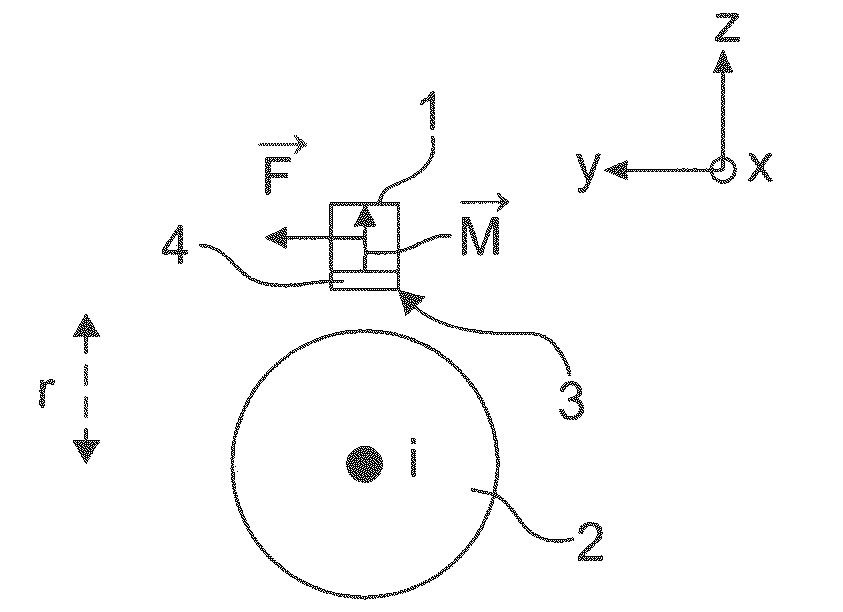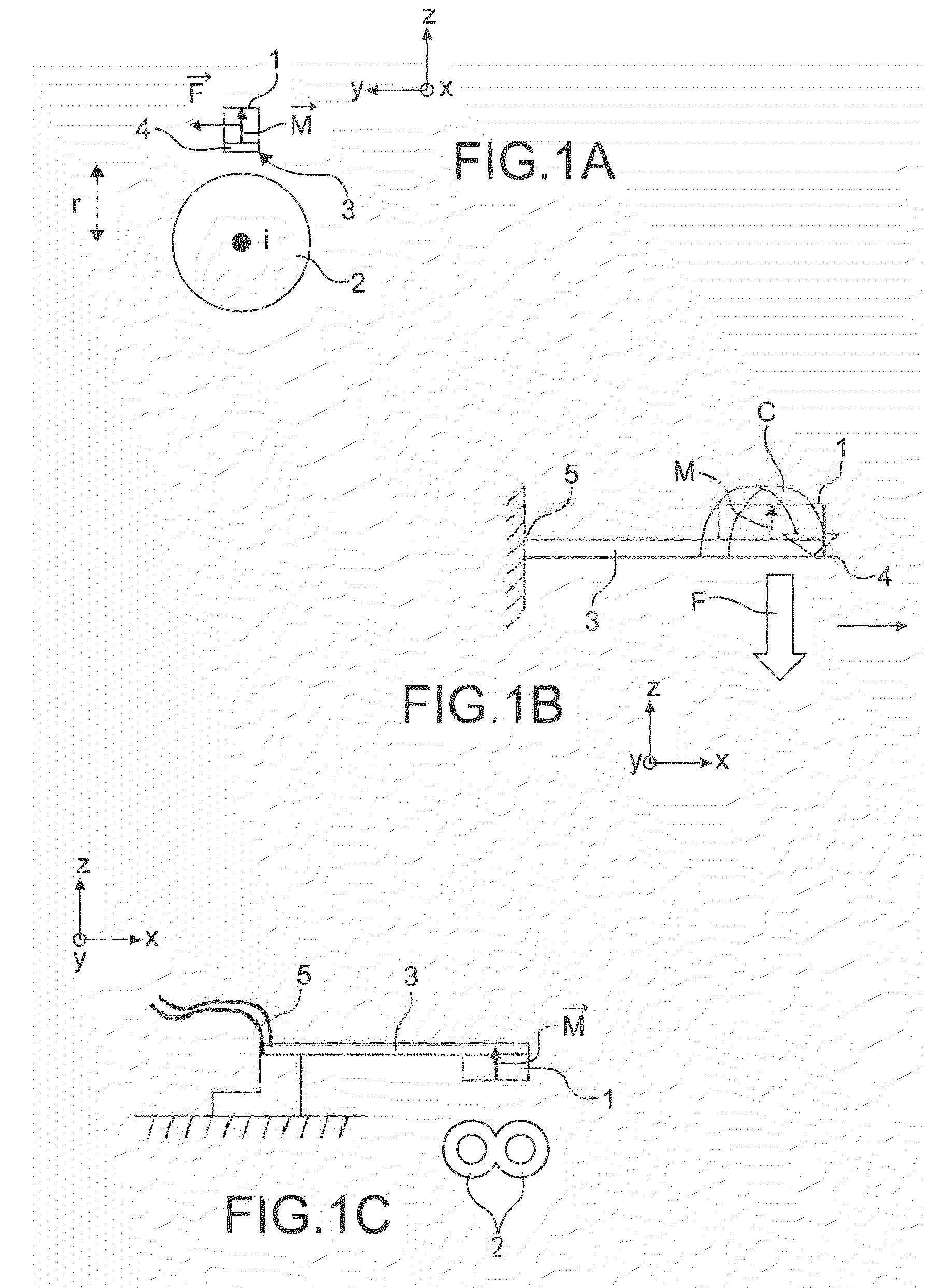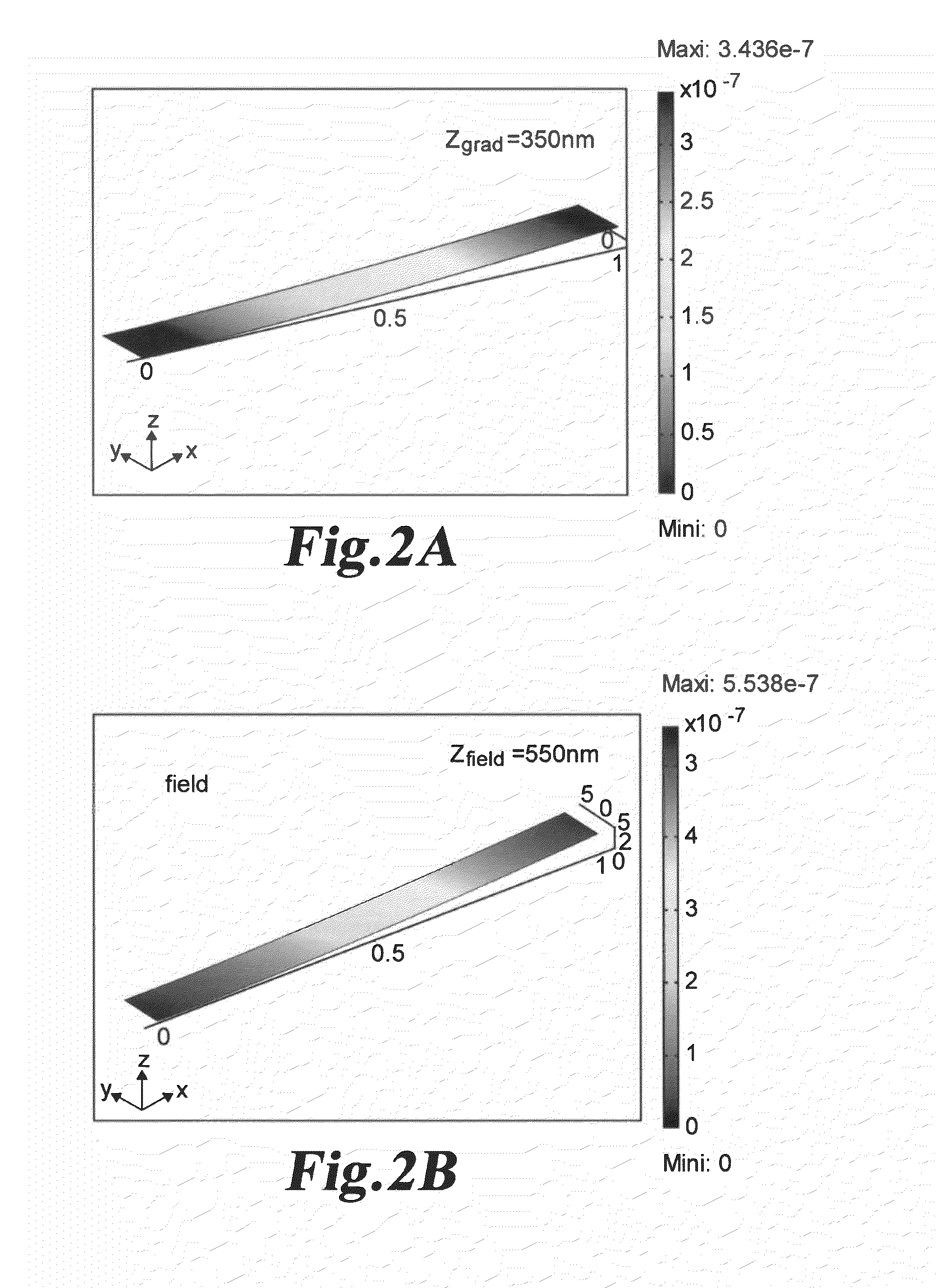Gradient sensor of a component of a magnetic field with permanent magnet
a technology of magnetic field and gradient sensor, which is applied in the direction of magnetic measurement, instruments, measurement devices, etc., can solve the problems of limiting the sensitivity of the gradient measurement, affecting the measurement of the other sensor, and affecting the accuracy of the gradient measuremen
- Summary
- Abstract
- Description
- Claims
- Application Information
AI Technical Summary
Benefits of technology
Problems solved by technology
Method used
Image
Examples
Embodiment Construction
[0083]Reference is now made to FIG. 3 which shows a gradient sensor of a component of a magnetic field according to the invention. It is assumed that the magnetic field is generated by a current i3 circulating in a electric wire conductor 30 directed according to the axis y of the orthonormal marker. The gradient sensor of the component of the magnetic field comprises at least one elementary sensor CE1 comprising a deformable mass 31 equipped with a permanent magnet 32. The deformable mass 31 lays at rest in the plane x,y. The deformable mass 31 can take the form of a membrane, which means that its thickness is much less than its two other dimensions. The deformable mass 31 is able to deform under the effect of a force exerted by the magnetic field gradient, this force being applied to the magnet 32. The effect of this force is to shift the magnet 32 and the latter locally brings with it the deformable mass 31, resulting in its deformation. The shift is made in a direction substanti...
PUM
 Login to View More
Login to View More Abstract
Description
Claims
Application Information
 Login to View More
Login to View More - R&D
- Intellectual Property
- Life Sciences
- Materials
- Tech Scout
- Unparalleled Data Quality
- Higher Quality Content
- 60% Fewer Hallucinations
Browse by: Latest US Patents, China's latest patents, Technical Efficacy Thesaurus, Application Domain, Technology Topic, Popular Technical Reports.
© 2025 PatSnap. All rights reserved.Legal|Privacy policy|Modern Slavery Act Transparency Statement|Sitemap|About US| Contact US: help@patsnap.com



